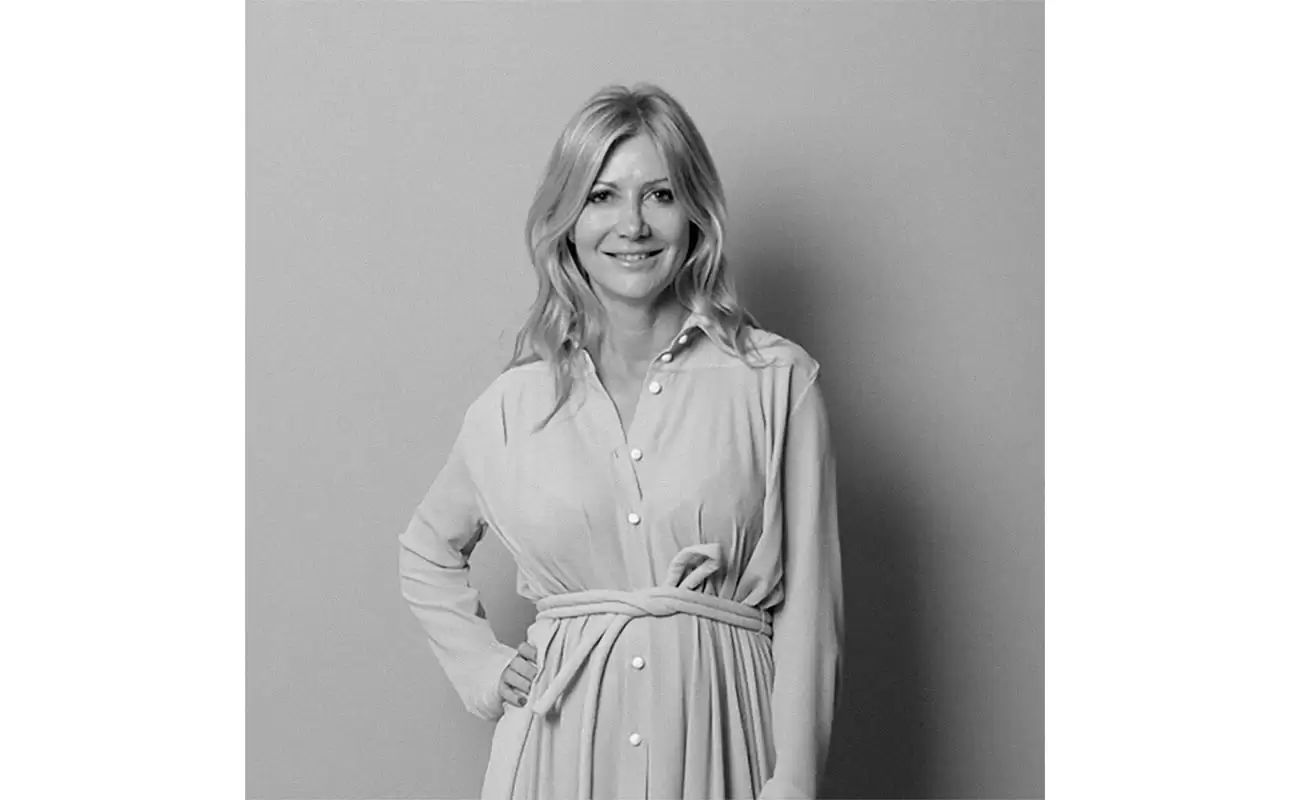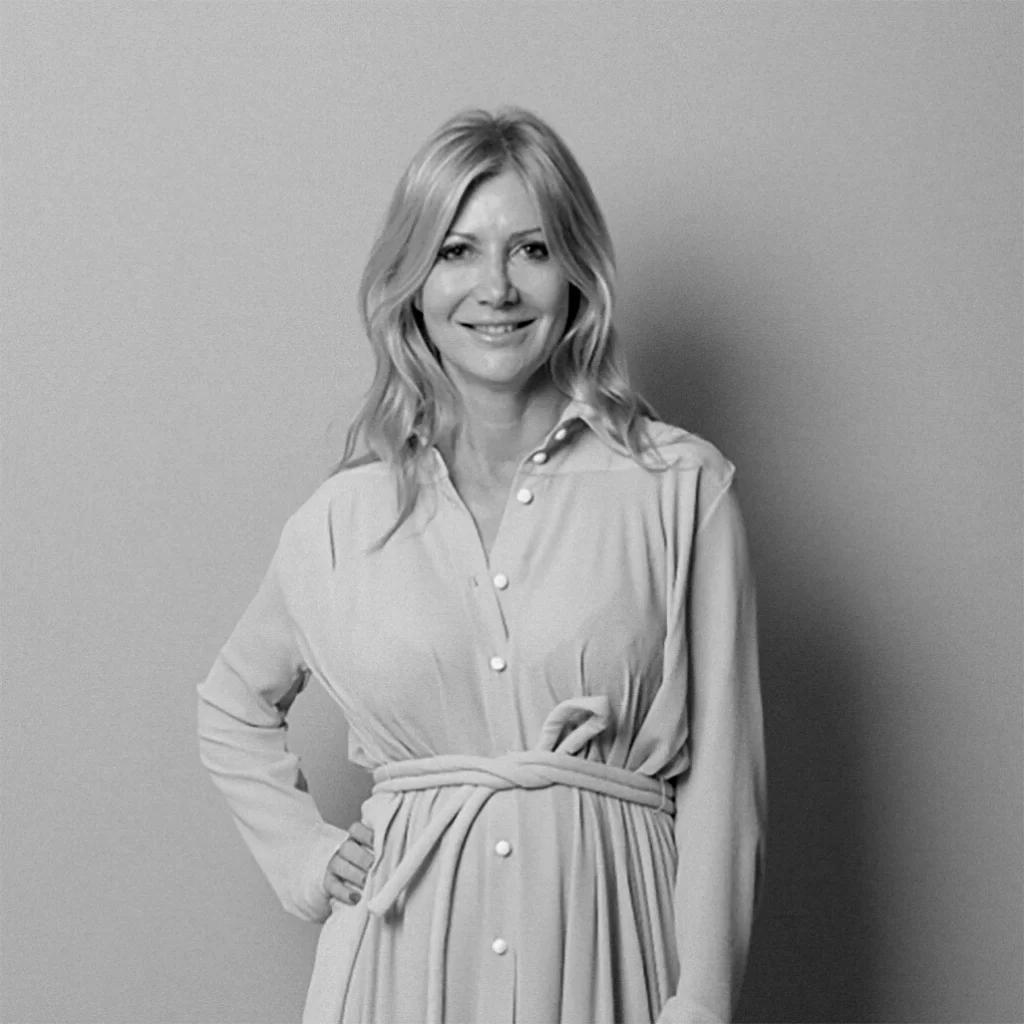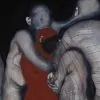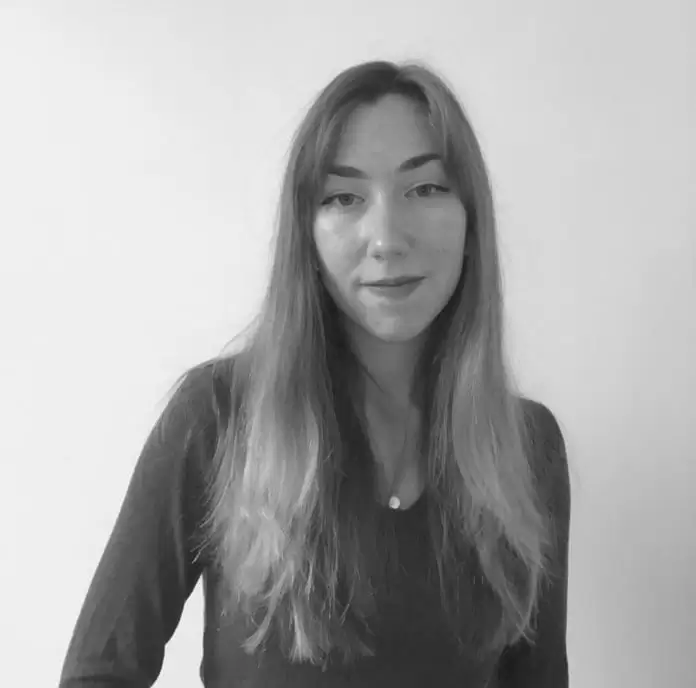Sigrid Kirk wears many hats as a an independent curator, cultural strategist, patron and art advisor. Kirk is Co-Founder of the Association of Women in the Arts (AWITA), a Trustee of the Drawing Room, on the Eye of the Collector Advisory Board, Glasgow International Advisory Board and the IKON Gallery London Advisory Board.
Recognising the ever expanding ecology of the art-world, the lack of opportunities to share and celebrate experiences and also the potential for a network of women to drive sectoral change.
Sigrid Kirk
In addition, Kirk and her husband fund an annual Artist in Residence at Yorkshire Sculpture Park for Maori and Pacific Island artists with Te Tuhi Gallery, Auckland. The New-Zealand Native’s passion for sculpture, building artistic bonds, and bringing new opportunities to the art world seem to fuel her incredibly active presence in the international art scene. Sigrid Kirk’s extensive experience and knowledge in the field earn her the entirely individual title of industry connector.
As busy as the curator and connector may be at present, her recent projects and endeavours look to the (post-pandemic) future of the arts while still reflecting on this particular shifting moment in history.
Most recently, Kirk has flexed on her refined skills and insight while working as lead curator of the The Royal Society of Sculptors’ Summer Exhibition. This year’s showcase took place at Dora House in London and was inspired by the cultural dynamism of The Roaring Twenties, also known as the ‘Années folles’ (crazy years). The exhibition explored a possible new era for the arts and drew a parallel between the 1920s and 2020s. Filled with plenty of fun and frivolity, the exhibition provided a clever contrasting response to the somberness of the pandemic.
Kirk is well-positioned to be someone who might make predictions about what a new era of artistic change could look like. As founder of AWITA, Kirk cultivates outlets for conversation and change about the experiences of women in the art world, actively working to breakdown barriers to essential networking, mentoring and professional development opportunities. Likewise, Kirk’s work running the annual Yorkshire Sculpture Park Artist Residency for Maori and Pacific Island Artists, bridges international connections to build lasting relationships for the future.
Sigrid Kirk brings us closer to a future of more positive change in the arts and keeps projects and people connected. Something which is much needed after a period of collective isolation and newfound need for community, both in the arts and beyond.
Q: What sparked your interest in contemporary art?
A: I first became interested in contemporary art when I was growing up in New Plymouth, New Zealand. It’s a small town with an extraordinary contemporary art gallery, the Govett-Brewster Art Gallery – which you could compare to some of the Kunsthaus institutions in Germany or elsewhere in northern Europe, where there are small towns with fantastic collections.
The Govett-Brewster holds the estate of Len Lye, the New Zealand-born artist who lived in Britain for many years, working for the British General Post Office, making films. That was the start of his artistic practice – he couldn’t afford materials, so he scratched into offcuts of the films. He also made vast kinetic sculptures. As a child I was taken to the gallery almost every week, on a Sunday; I’d turn the sculptures on and we’d sit on the black-carpeted stairs, and look at these huge kinetic objects – big bands of steel that flipped and twisted and made noises. When I think about art, for me that’s where it all started.
Q: How do you foresee the pandemic affecting artists and arts professionals currently? How do you think it will affect art-making in the future?
A: I think artists and arts professionals will collaborate more, that we will see exciting artistic partnerships which are on one level about economic efficiency and strategic reach across geographies, platforms, and audiences. In terms of art making, I think artists continue to make the work they want to make, but maybe we are paying attention in a different way.
To be specific about what we focus attention on and for many artists during a time of significant personal upheaval and social realisation of the last year – George Floyd’s murder, the humanitarian plight in Afghanistan has turned world wide attention to the daily experiences and inequities of many. Similarly the urgency around climate change will see new approaches and strategies to making wot for biennials and art fairs which may use local makers and materials or favour more socially engaged practises.
Q: What inspired you to develop AWITA?
A: Recognising the ever-expanding ecology of the art-world, the lack of opportunities to share and celebrate experiences and also the potential for a network of women to drive sectoral change were key drivers for me and my Co-Founders Kate Gordon and Katrina Aleksa Ryemill.
Information about professional development, contract negotiation, freelance work, maternity and childcare—little of this is formally or informally provided or discussed in the art-world—unlike the more regulated financial sector for example, which provides structured access to human resource support. Moreover an increasing number of women are turning to portfolio or freelance careers so an organisation which allows for conversations and community around shared goals, values and interests seemed timely.
Q: How does AWITA support women in the arts?
A: We run both physical and online events around our three pillars – networking, mentoring and professional development. Our membership is both national and international and I feel that we support collaborative dialogue and communication in a safe place.
I think it’s also true to say that our members are constantly inspiring and inspired by each other, and the value of this cannot be underestimated. During lockdowns we had a very active programme of events including weekly online coffee mornings and we’ve been told this connectivity was a lifeline to many of our members.
Q: What do you think are the biggest hindrances to women working in the art world?
A: There are few hindrances to women starting out work in the art-world In fact the sector attracts disproportionately higher numbers of women. The issue is the difference in the acceleration in their careers from male colleagues. This tends to be linked to having children and anecdotally, because there continues to be a sort of reluctance to speak candidly about this, it affect many women’s decisions about when to start a family given the amount of after dark ( private views, fairs, dinners) required.
Q:What core advice would you give women starting out as artists or art professionals? What factors should they consider early in their careers?
A: Develop your network, take every opportunity to talk to people, and really know what your passion is.
Q: Tell us about the exhibition you recently curated at The Royal Society of Sculptors. How does it draw thematic parallels between the “Roaring Twenties”, or Années folles and the present?
A: The obvious parallel is the flight back into sociability after a pandemic – in 1918 the flu pandemic and of course over the last 18 months Covid 19. The decade of the roaring twenties marked a feeling of newness associated with modernity and artists adopted an increasingly dynamic approach to form, imagery and materiality. I see a similar sort of cultural dynamism emerging now.

Q: What are some of your favourite works from the exhibition?
A: I liked a lot of the work, I was particularly drawn to Linda Hubbard’s small table based works which play with the everyday qualities of sculpture, of the role of accident and of finding faces in our food. A bit arte proverb, a bit surrealist but also tragicomic morsels of absurdity. Materially they are also very inventive.
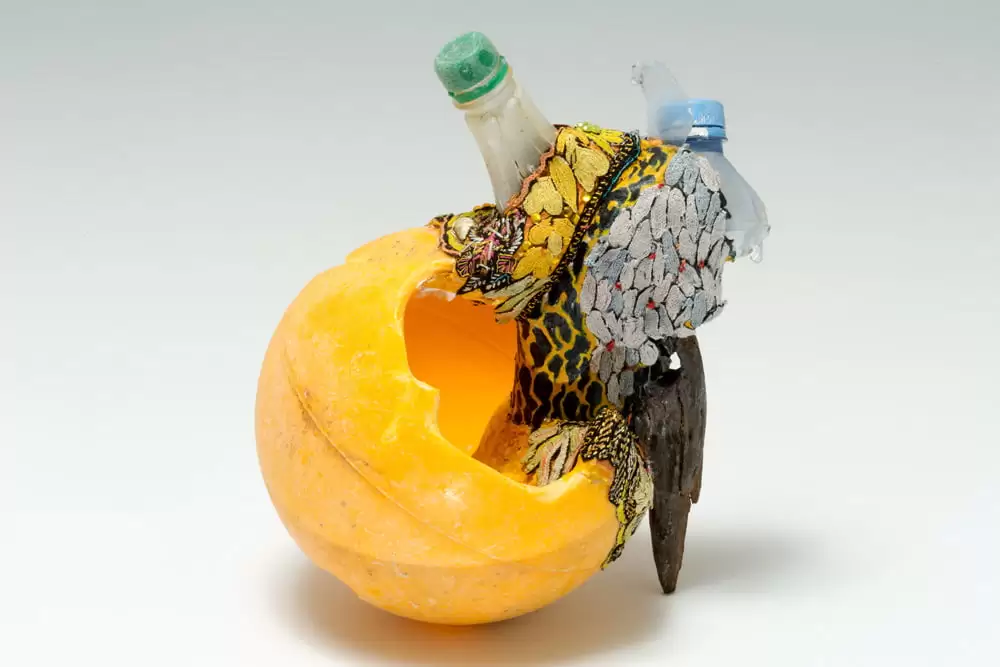
by Linda Hubbard MRSS
Likewise the rich collision of colour and form and material in the forms of My Life as a Bird by Madi Acharya-Baskerville created from ready made found materials. They nod to a certain tribal art influence but also clearly refer to our climate of waste, an ocean buoy melted and fused with fabrics on its way across the southern garbage patch.
Roller Coaster by Lise Bouissiere is exciting because really its more of a sculptural drawing, a three dimensional sketch in space. It draws your eye through space, it’s quite ephemeral, more of a trace of an idea and shows how far sculpture has come from the monumental bronze or marble piazza art of the past.
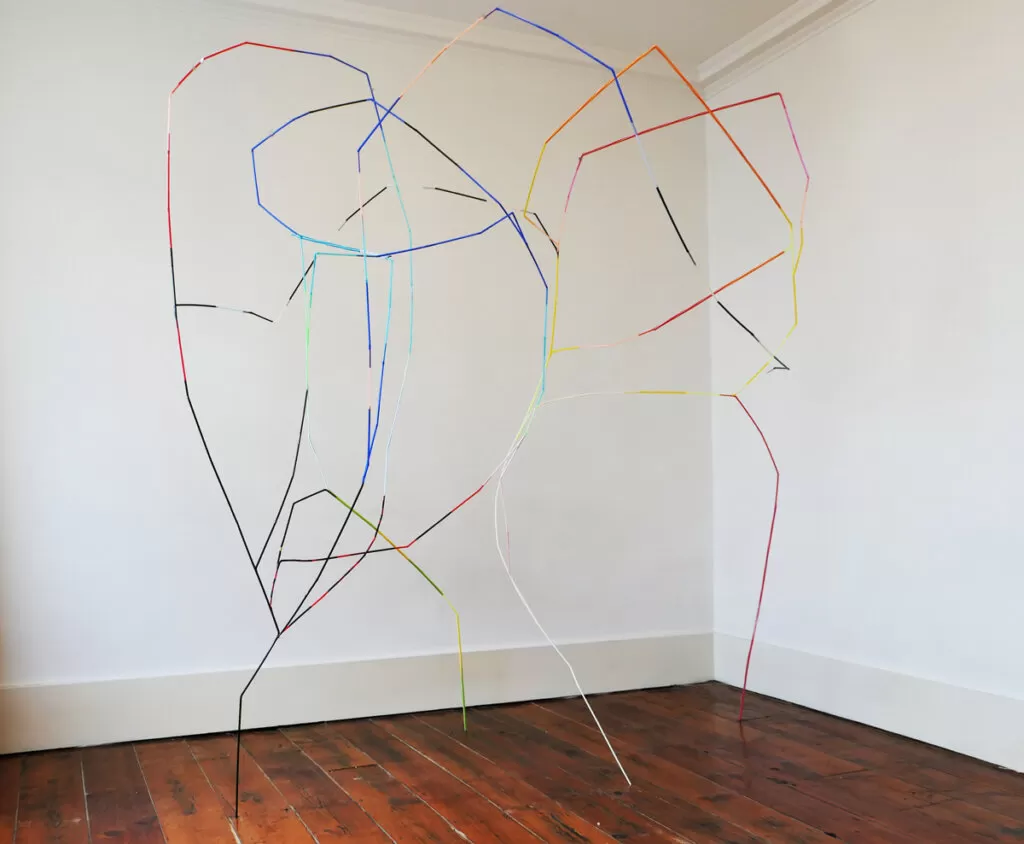
Q: How does sculpture resonate with you as a medium?
A: I think for me sculpture is intrinsically connected to its site, the very physicality or indeed coversely the ephemeral nature of it, the conversations it necessarily has in space and across time. Because sculpture needs to be moved around, it therefore is different every time, and that can get very philosophical, and bring a hyper-awareness of your own relationship to the material and the form.
Q: What led you to develop the residency at Yorkshire Sculpture Park for Maori and Pacific Island artists?
A: New Zealand is a multicultural society, and the art of the indigenous Maori and Pacific Island is definitely celebrated and visible, however I was not seeing much of this contemporary practise outside of Australasia. The landscape, its’ form and psyche is deeply embedded in the national consciousness. In New Zealand or Aotearoa ( to give it its Maori name) you can see the bones of the landscape which in Yorkshire are softened by centuries of agricultural activity.
After talking with Clare Lilley, Director of Programme at Yorkshire Sculpture Park we both felt there were powerful synergies and that it would be incredibly valuable to give an artist the opportunity to come to YSP, the UK’s largest sculpture park and supported by the curatorial team, have time and space to research and think. Also to be able to see work being made in the UK now and meet with UK and European peers and colleagues. New Zealands physical isolation is a blessing and a curse even in an international and connected art market.
https://www.instagram.com/sigridakirk/
©2021 Sigrid Kirk


